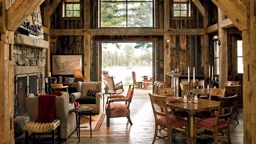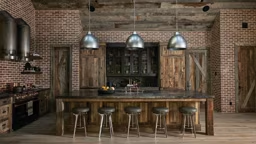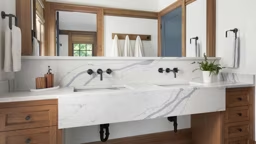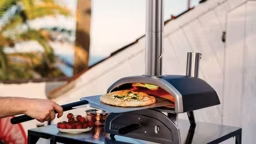
By now, there’s a good chance you’ve probably heard the buzz about smart-home technology. If you don’t have a device yourself, it’s likely you know someone who does. The Swedish consulting and analysis firm Berg Insight, which specializes in the “Internet of Things” (aka, the network of internet-connected devices), estimates that, as of 2022, 39.2 percent of all households in North America had at least one smart-home device — that’s 57.5 million smart homes! They predict that by 2027, 88.1 million homes in North America will be smart, or about 58 percent of all homes on the continent.
The definition is simple: devices that are connected to the internet and therefore controllable by a smart phone or tablet. But now, after years of advancement, the applications are broad: you can do everything from set your lights on a schedule to create a user setting for your toilet the way you would your driver’s seat.
Beyond novelty, there’s abundant pragmatic applications for “smart” technology. Berg Insights reports that the most popular devices are thermostats, light bulbs, security cameras, door locks, plugs and speakers. This makes sense; as energy costs rise, these devices make saving energy (and money) automated, not an afterthought. Plus, they offer new ways to secure remote homes and can make aging in place easier.
But smart-home tech is not without criticism. Voice-activated devices are always listening for their “wake word” (for example, “Alexa” for Amazon devices and “Hey Google” for Google Home), so some users are uncomfortable with inviting eavesdropping ears into their homes, despite manufacturers’ assurances that these devices are only listening for the wake word, not recording conversations or sounds. Furthermore, some find that smart-home systems and devices simply add more complications than solutions, i.e., it’s another app to update, or another password or command to remember.
However, as this technology grows, so do industry collaborations to make these tools safer and easier for consumers to use. For example, the Home Connectivity Alliance, which includes members like LG, Samsung and GE, aims to prioritize and improve consumer convenience, trust and safety through industry and government collaborations and innovation.
So, if smart-home technology has ever made you feel anything but, have no fear. These tools have come a long way and are getting easier to integrate into your home. Sure, the technology is “smart,” but what it really makes your home is…

SAFER
With security cameras and door locks ranked as some of the most popular smart-home devices for today’s homeowner, it’s clear one of the technology’s most practical applications is security. For homes in remote, rural locales, this can be game-changing.
Cameras, like those from Ring, Nest or Wyze, are popular, conventional options that allow you to keep an eye on the interior or exterior of your property from a variety of Wi-Fi enabled devices. That being said, sometimes log or timber homes need something a bit more … rugged. Vosker creates heavy-duty, weather-proof security cameras that utilize 4G-LTE mobile connectivity and solar power, so they can be installed anywhere on your property — no Wi-Fi or power cables necessary.
Locks are another excellent use for smart tech, and many incorporate a camera feature. Not only do these provide an added layer of security (you can see who’s coming and going and assign unique, temporary codes for handymen or nannies), they also offer peace of mind. With easy app access and the ability to lock and unlock via keypad, fingerprint, app or key, you never have to wonder if the door was locked or if you forgot your keys.

MORE COMFORTABLE
The ability to fine-tune the lighting in your home — both natural and artificial — from a tap on your phone or a simple voice command is not just convenient, it’s also a sage choice for aging in place and may even contribute to a healthier home.
For artificial lighting, today’s smart-home technology allows you to set your light fixtures to schedules, turn on via voice command and create a wide variety of lighting “schemes.” But you also can use smart-home devices to control the natural light and fresh air in your home. For example, Velux makes smart skylights that can monitor temperature, humidity and CO2 levels, and will automatically adjust accordingly to create an optimized indoor climate for your health.
Smart shades, like those from the Serena line by Lutron, offer the ability to raise or lower your window coverings from the Lutron app, smart remote or voice assistants including Alexa, Google Assistant and Siri. The shades are quiet and require no cords, making them a safer choice for homes with kids or pets. They come in a variety of materials, from honeycomb and roller shades to wood blinds that can automatically adjust the amount of tilt based on the position of the sun.

EXTRA EFFICIENT
Smart thermostats may not exactly be new, but they’ve gotten wiser with age. And since heating and cooling consume the most energy in a home, homeowners have big savings to gain. Energy Star estimates that making the switch to Energy-Star rated smart thermostats, users could save 8 percent on heating and cooling bills, depending of course on climate, personal preferences, occupancy and/or HVAC equipment.
Today’s smart thermostats adjust on the fly and can even learn to optimize based on your habits. Take for example the Ecobee Smart Thermostat Premium. This little thermostat stands out from the crowd as it can receive voice commands directly, without the use of another device or app (though it is compatible with other smart home systems). With incredibly precise sensors, it can monitor your air quality, and it takes humidity into account when adjusting the temperature. Convenient for remote or vacation homes, it provides alerts for sudden temperature changes and can be paired with additional sensors for security.











